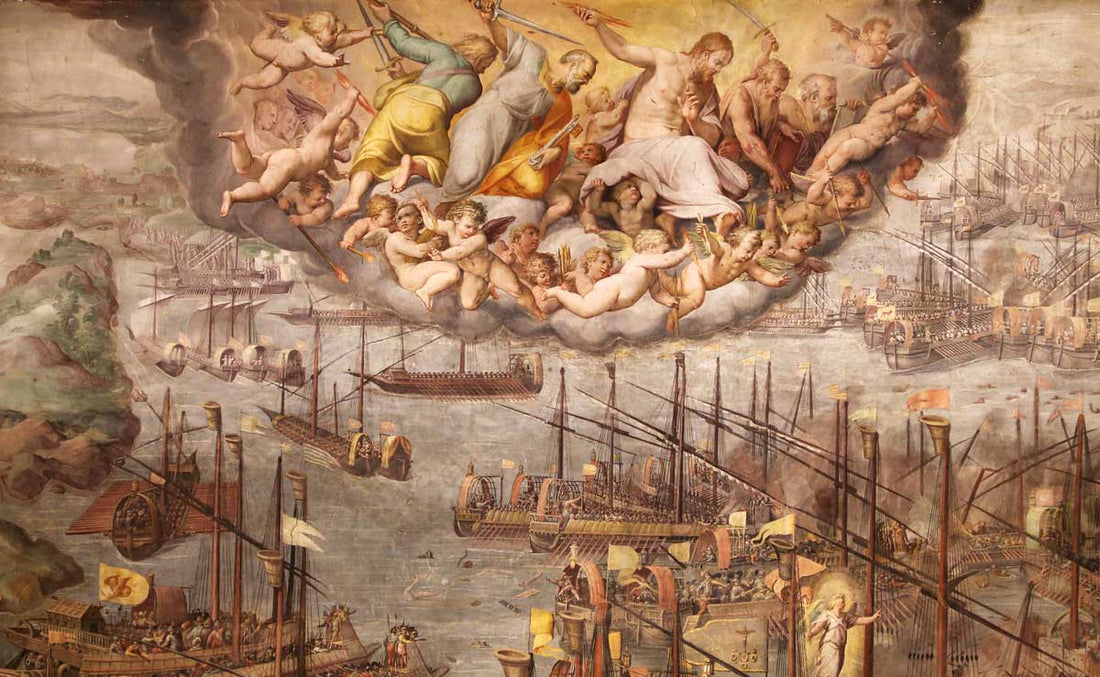
The Battle That Was Won on Beads: The Rosary and the Victory at Lepanto
The battle that proved prayer isn’t passive.
In 1571, Europe stood on the brink of collapse—and victory came not by force alone, but by faith wielded through the Rosary.
A Storm on the Horizon
The 16th century was a time of upheaval. The Protestant Reformation had shaken the spiritual foundations of Europe, and the Ottoman Empire was expanding rapidly westward. The Mediterranean, once a hub of Christian civilization, had become increasingly dangerous as Ottoman naval power surged.
When Sultan Selim II set his sights on Italy, it wasn’t just a matter of territory. It was a direct threat to the heart of Christendom.
Recognizing the spiritual gravity of the moment, Pope Pius V called upon the divided Catholic states of Europe to form a united front—what would become known as the Holy League. Composed of forces from Spain, Venice, Genoa, and the Papal States, this coalition fleet was led by Don John of Austria, a devout Catholic and half-brother to King Philip II of Spain.
Yet, even as ships were readied and swords sharpened, Pope Pius V knew this battle would not be won by might, and the soldiers on the battlefield, alone.
An Army of the Faithful
Leading up to the battle, Pope Pius V called all Christians to pray the Rosary for victory. He entrusted the defense of Europe to the intercession of Our Lady, asking the faithful to storm heaven with their prayers.
It’s said that across Italy and Spain, people knelt in churches and chapels, holding their beads, imploring the Queen of Heaven for deliverance. The pope himself led public processions in Rome, praying the Rosary fervently.
This wasn’t political pageantry. It was a genuine, desperate plea. The Rosary, seen by many as a humble devotion, was now being wielded as a spiritual weapon.
The Clash at Lepanto
On October 7, 1571, in the Gulf of Patras near Lepanto (modern-day Greece), the Holy League’s fleet met the vastly larger Ottoman navy. The Christians were outnumbered. The weather favored the enemy. The battle seemed unwinnable.
But then, the winds changed—literally.
A sudden shift in wind allowed the Holy League to gain the upper hand. It was as if nature itself responded to the prayers of the faithful. Despite being outmatched in size and weaponry, the Christian fleet overwhelmed the Ottoman armada. Over 200 Ottoman ships were sunk or captured, and thousands of Christian slaves aboard the enemy ships were freed.
Back in Rome, Pope Pius V is said to have had a vision of the victory as it happened. He rose from a meeting, looked out a window, and declared, “The Christian fleet is victorious!” Days later, messengers confirmed what he already knew through divine insight.
A Feast for the Queen
In thanksgiving, Pope Pius V established the Feast of Our Lady of Victory, later renamed the Feast of Our Lady of the Rosary, to be celebrated each year on October 7. The victory was officially attributed not just to the valor of soldiers or strategic brilliance—but to the intercession of Mary and the faithful praying the Rosary.
It was a triumph of grace over fear. Of heaven's power over earthly odds.
What It Means for Us Today
The Battle of Lepanto may feel far removed from modern life, but its lesson is as relevant as ever. Our battles may not involve sails and swords, but we each face cultural, spiritual, and personal challenges that feel overwhelming.
The Rosary reminds us that we are never powerless. That prayer is not a last resort—it’s our first line of defense. It binds us to the saints who came before us, and it reminds us that Our Lady still goes before us, just as she did at Lepanto.
“Give me an army saying the Rosary and I will conquer the world.” – Blessed Pope Pius IX
So when the tide seems against you, when life feels heavy or dark, remember this: a humble devotion, prayed by ordinary people, once changed the course of history.
It still can.
Have You Experienced the Power of the Rosary?
Have you had your own “Lepanto moment”—a time when the Rosary carried you through something challenging?Share your story in the comments or with us on Instagram @armoraflame. Let’s keep the legacy of Lepanto alive—one Hail Mary at a time.